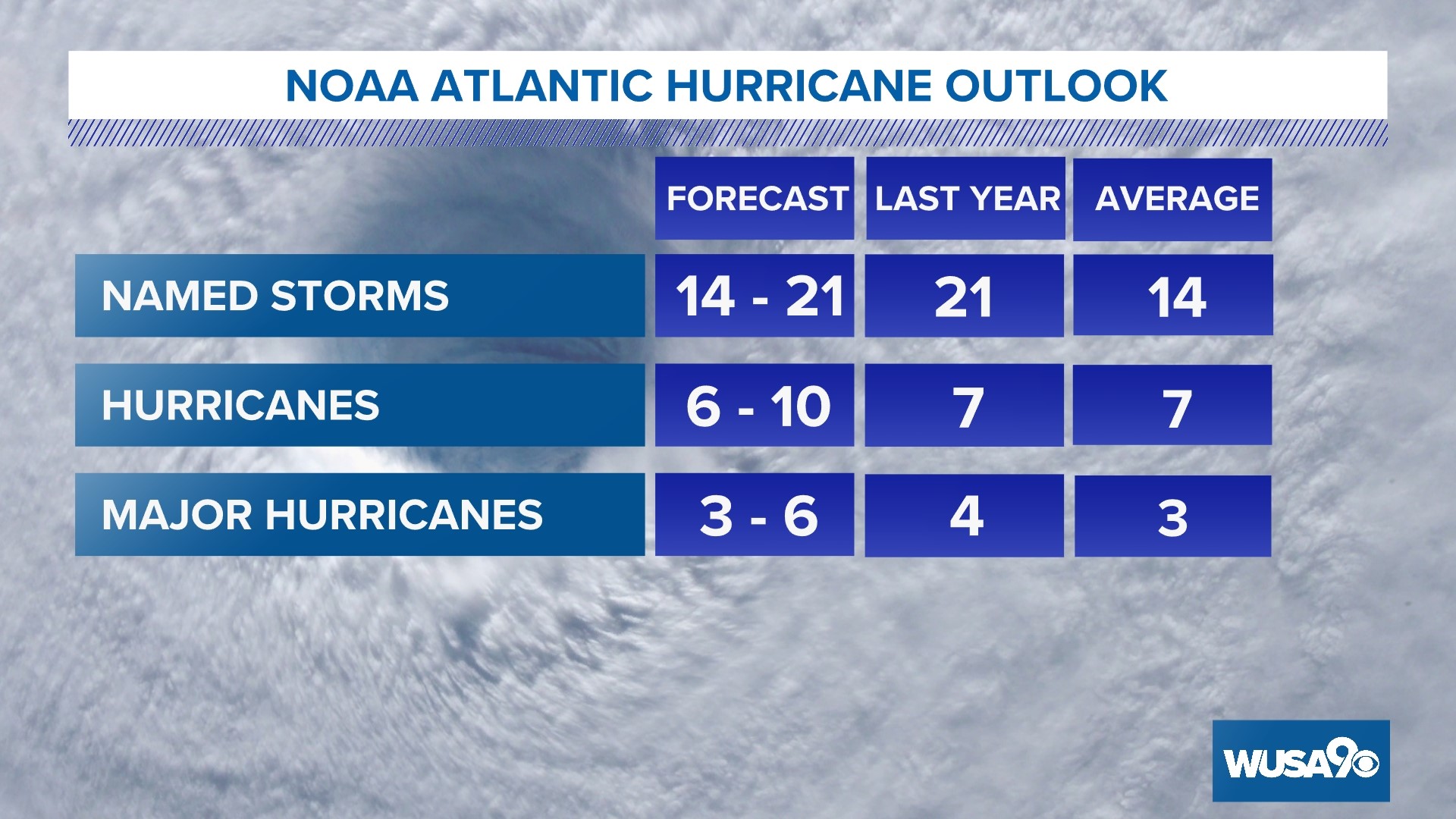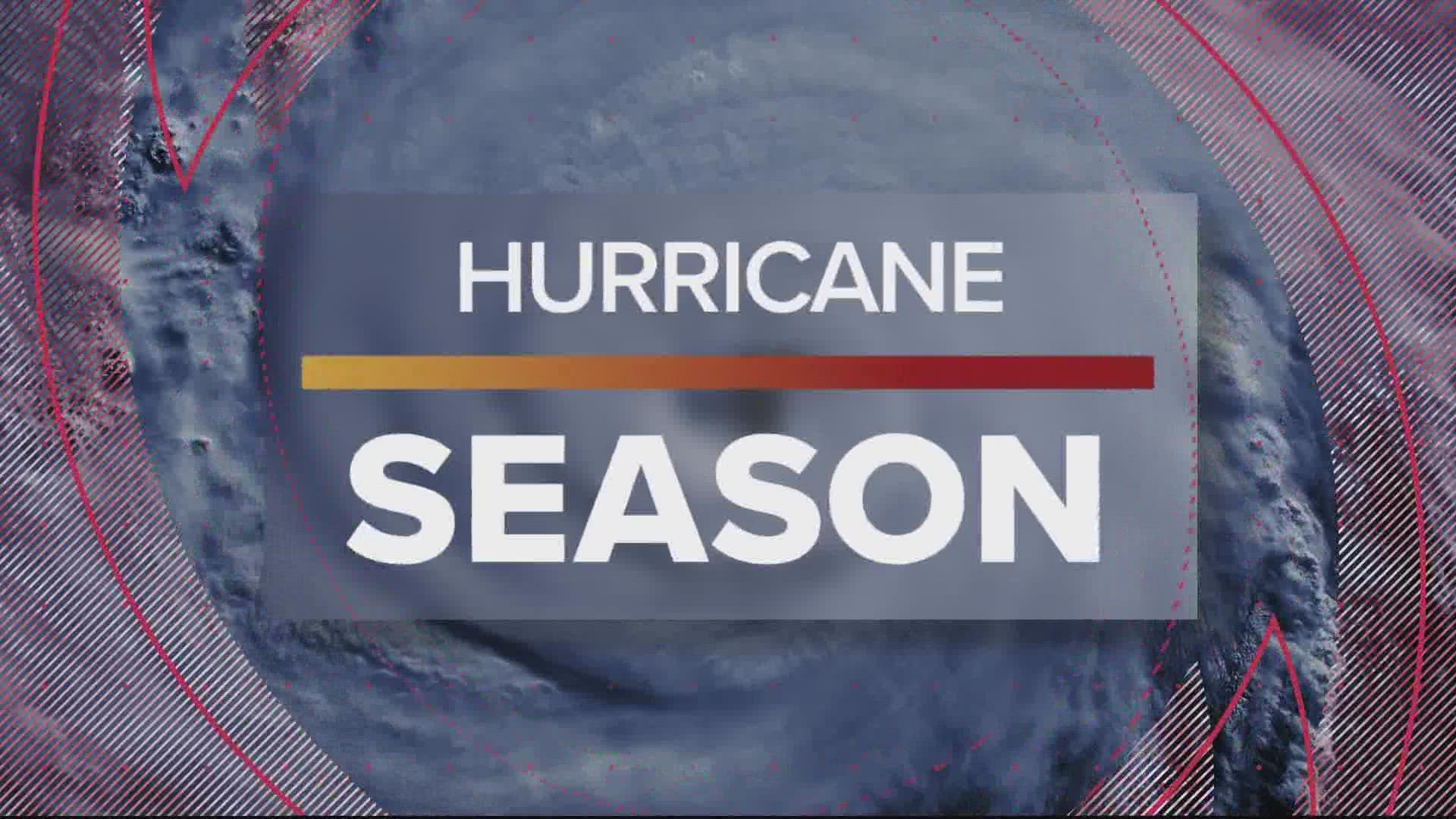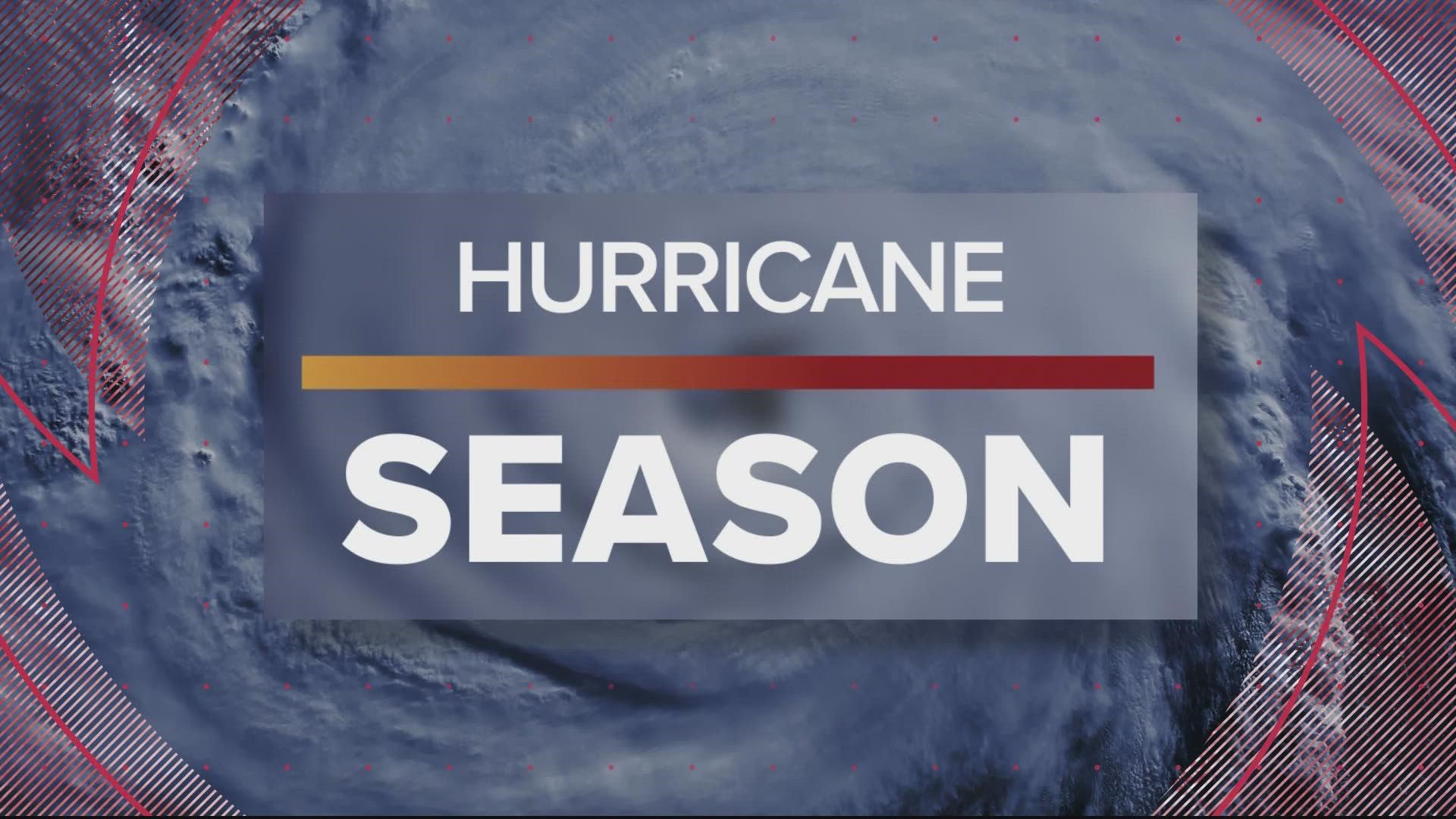WASHINGTON — The National Oceanic and Atmospheric Administration (NOAA) Climate Prediction Center, which is a division of the National Weather Service, released its 2022 Atlantic hurricane season outlook Tuesday.
The Atlantic hurricane season officially begins June 1 and runs through Nov. 30, but every year since 2015 there have been named storms before the start of the season.
NOAA is predicting a 65% chance of an above-normal season, a 25% chance of a near-normal season, and a 10% chance for a below-normal season.
If this outlook comes to fruition, it would be the seventh consecutive above-average hurricane season.

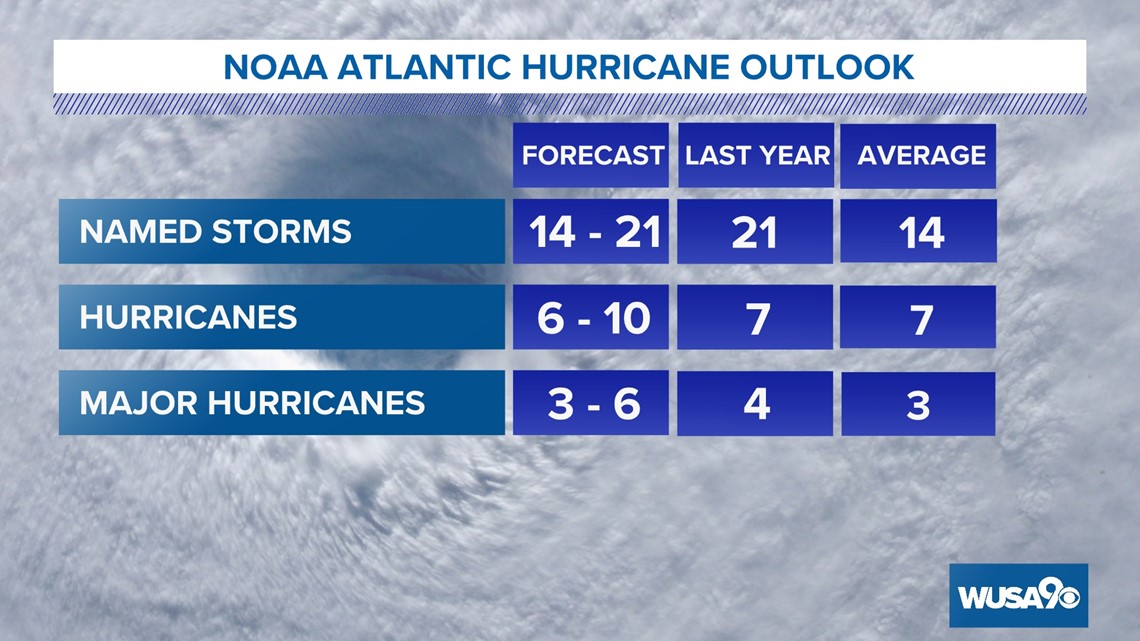
Colorado State University is another institution that forecasts the upcoming hurricane season. Their forecast is also higher than normal.

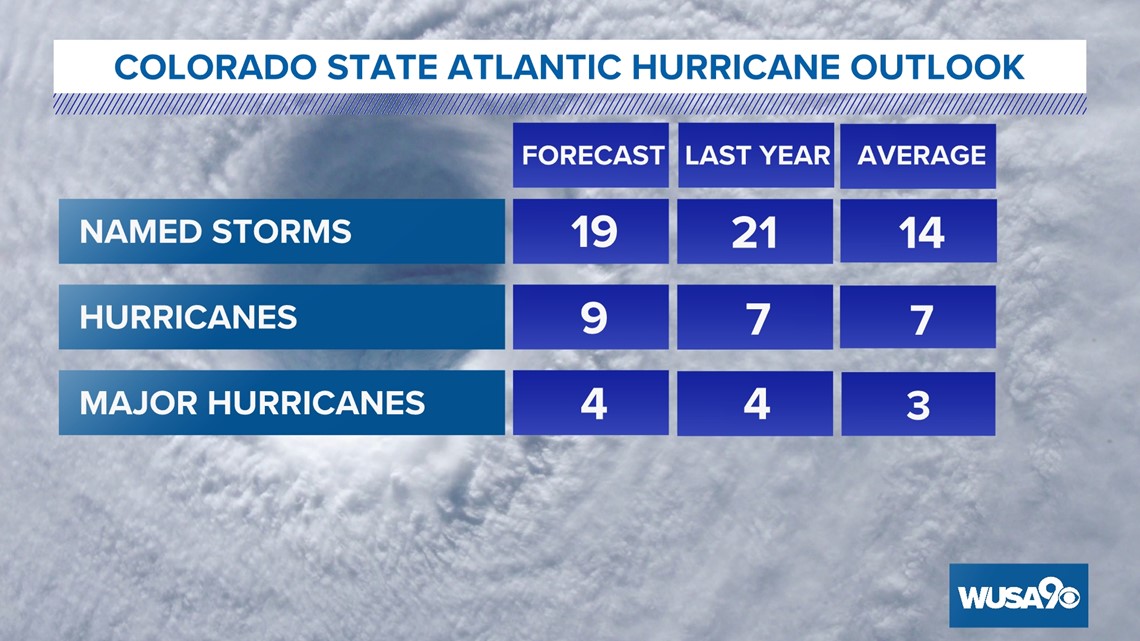
There are two major factors indicating this year could be active including warming ocean waters and an ongoing La Niña pattern. When a La Niña setup is present, we can expect lighter upper-level winds which results in less wind shear. Wind shear otherwise limits the development and strengthening of storms in El Niño summers.

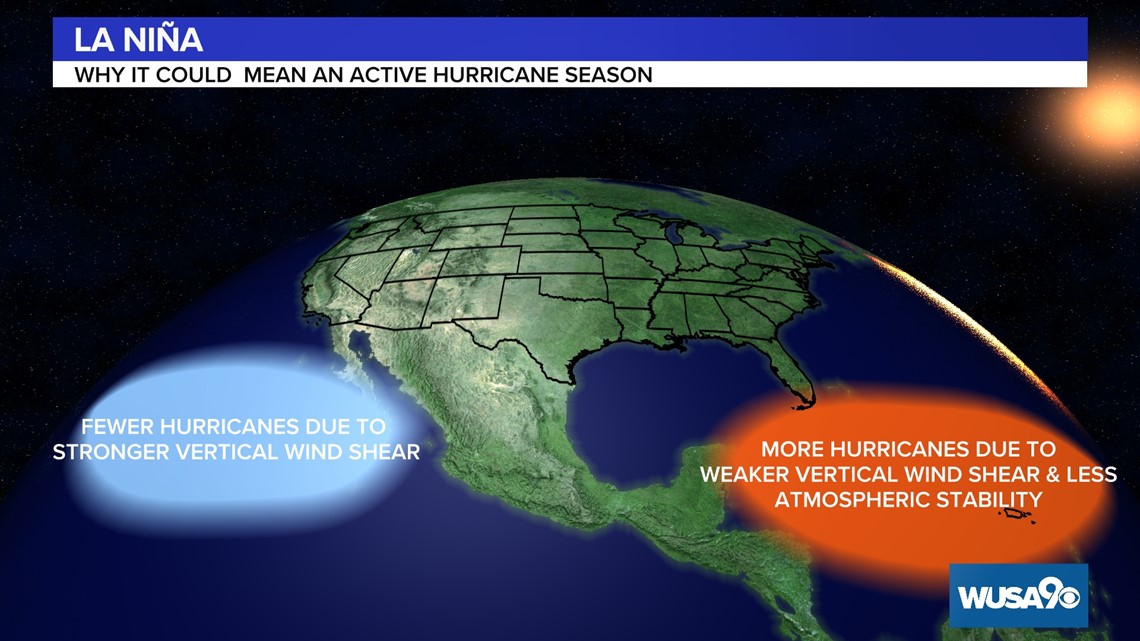
So how common are hurricanes in the DMV?
Here is a list of tropical storms and hurricanes that have come within 150 miles of D.C. since 1842, when records started being kept.

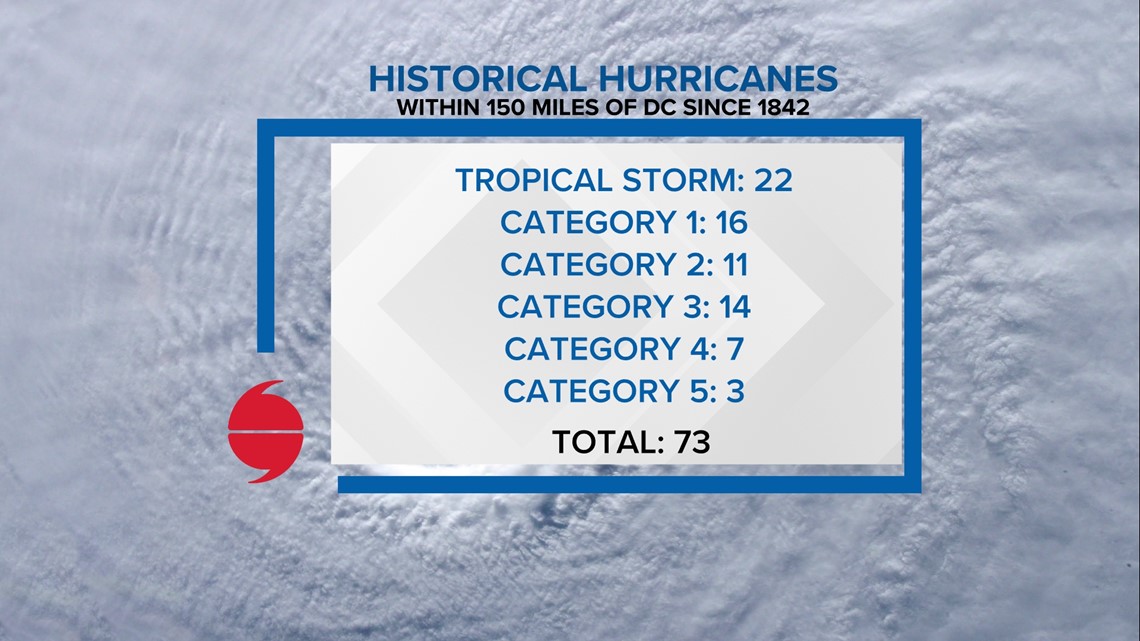
Here are the tropical parameters:

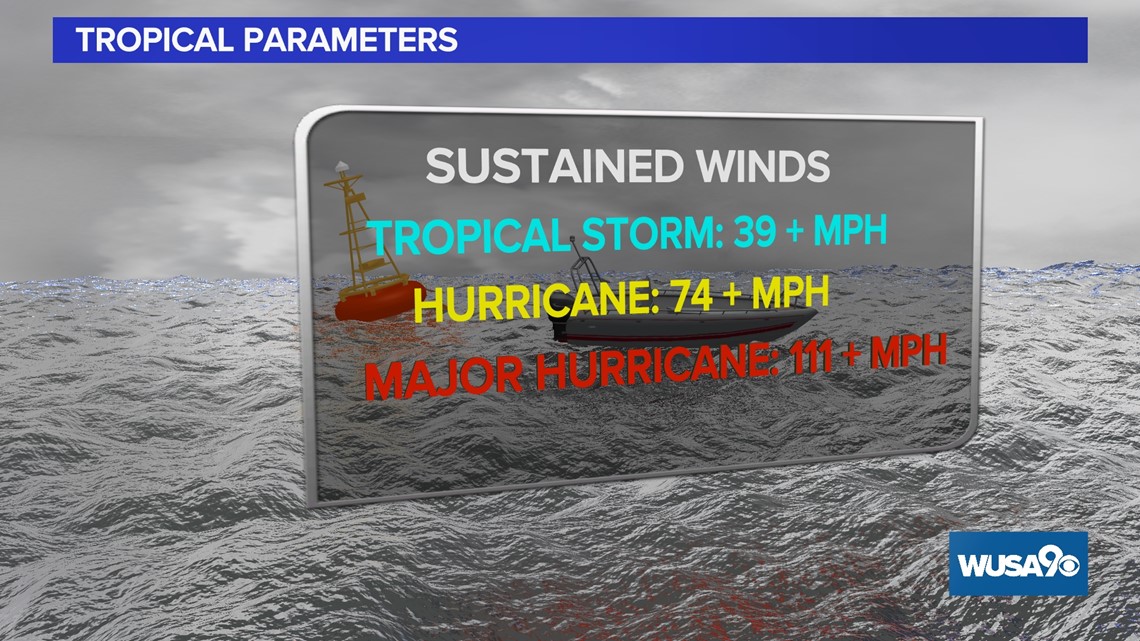
Here are the Atlantic Basin names for the 2022 season:

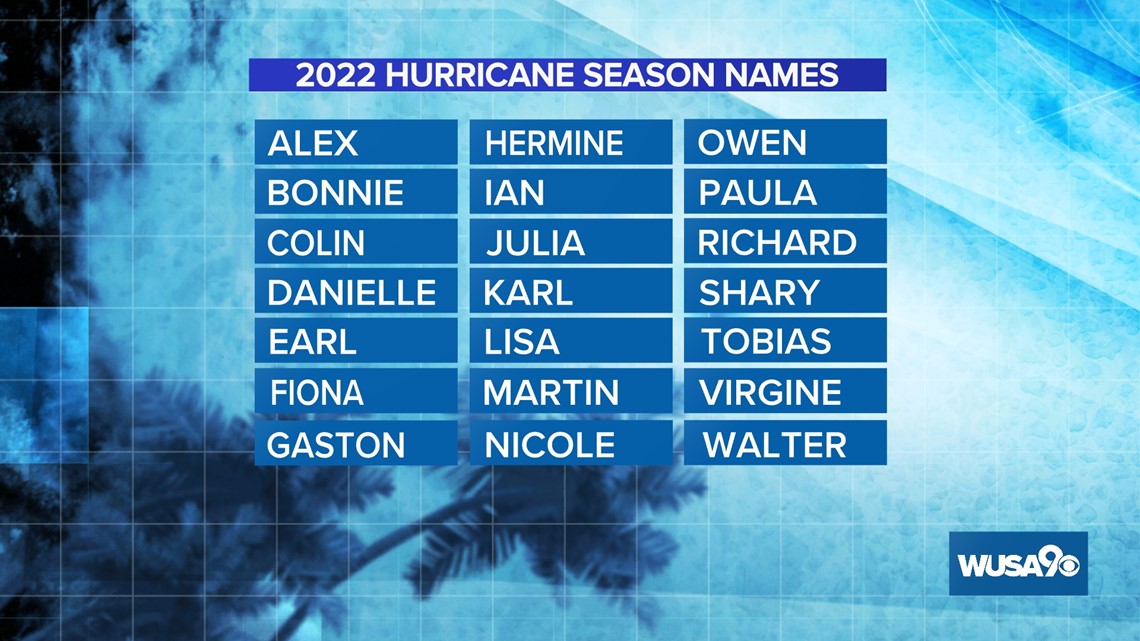
While the hurricane season stretches from June through November it takes a while for conditions, such as sea surface temperatures to warm up. Did you know the September is the busiest month on average ? Did you know that September the tenth is statistically the day with the highest chance for a hurricane somewhere in the Atlantic Basin ?

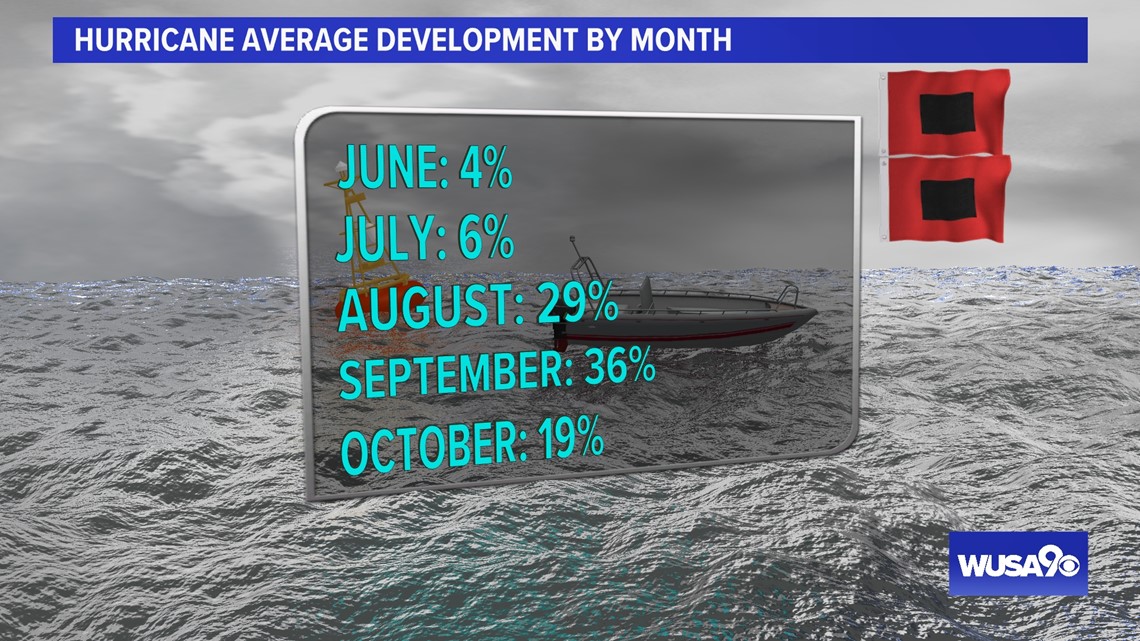
While direct impacts from tropical systems aren't very common, such as strong sustained winds, indirect impacts can still be very dangerous for our area so it's important to always have a plan in place with your loved ones.
Flooding and severe weather outbreaks are the biggest threats from tropical systems in the DMV. The remnants of Tropical Storm Agnes in June of 1972 brought as much as a foot of rain and massive flooding. The remnants of Tropical Storm Ida spawned the Annapolis tornado last September. The remnants of Tropical Storm Isabel in 2003 produced massive flooding in the DMV and numerous tornadoes. Annapolis recorded a storm surge of over seven feet that eclipsed the storm surge from the 1933 Chesapeake Potomac Hurricane. Over 1.4 million were without power in the DMV with rainfall amounts from two to ten inches. Winds gusted to 58 mph at National and 73 mph in Richmond.
Sign up for the Get Up DC newsletter: Your forecast. Your commute. Your news.
Sign up for the Capitol Breach email newsletter, delivering the latest breaking news and a roundup of the investigation into the Capitol Riots on January 6, 2021.
Here

